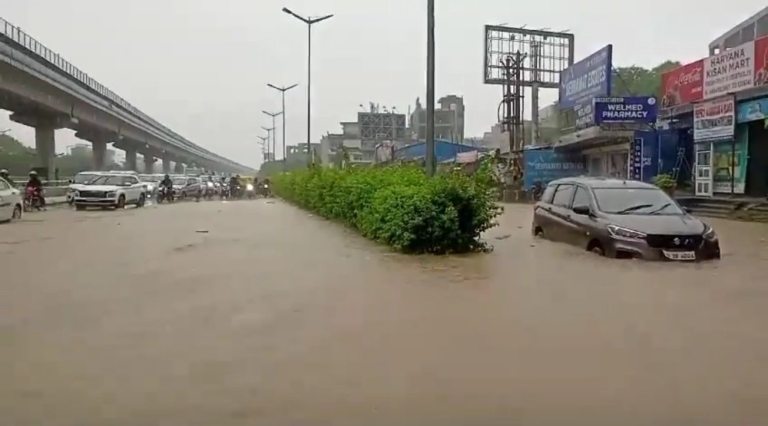There is widespread consensus that farm distress, rampant unemployment, rising inequality and Agnipath scheme are the overarching issues that dominate the narrative of the Haryana Assembly elections. Political observers, on-ground reports, and commentators have said that these issues will also crowd out the conventional caste calculations in the state. Even though this assertion is a bit far-fetched when you closely examine the list of the candidates of various political parties, nonetheless, there is tremendous anti-incumbency on the ground against the BJP.
A deeper look at the factors affecting the Haryana elections, however, reveal that not just rural issues, urban neglect and poor infrastructure issues would also determine the outcome. This is important, because much of the media space has been consumed in covering spill over issues from the Lok Sabha elections in the rural paradigm.
The Congress won 46 Assembly segments in the Lok Sabha elections, but 44 segments were also won by the BJP. The Congress swept rural Haryana, but the BJP retained its conventional urban foothold in more than 20 urban and semi-urban seats including Gurugram, Faridabad, Karnal, Hisar, Sonepat and Badshahpur segments, while the Congress made an impressive comeback in Rohtak, Sirsa and Kurukshetra. In the ongoing Haryana elections, the Congress should take respite from the fact that BJP won 79 out of 90 Assembly segments in 2019 Lok Sabha elections, but few months down the line, reduced its tally to just 40 seats, and was forced to form an alliance government in the state, due to massive anti-incumbency.
This anti-incumbency has only peaked now in 2024. One of the understated reasons is widespread urban degradation in Haryana, lack of infrastructure, rising inequality, inflation, shutting down industries, low growth and investment, and unprecedented unemployment even in rural centres.
A microcosm of what is wrong in Haryana’s degrading urban landscape is Gurugram — the famed millennial city, where the per capita income of the city’s residents can easily be contrasted with the atrociously sliding public amenities in the city. Water logging has become a permanent fixture in the city, cave-like potholes is a menace on its roads and unpicked garbage remains strewn at street corners. Power cuts in posh Gurugram colonies and apartment are largely unnoticed because of the elite population, but in builder floors where most of the lower middle class resides, 3-4 hours of power cuts have become a routine. Water scarcity is all pervasive during the summer months, and Gurugram water tanker mafia indulges in rent seeking through surge pricing, making it impossible to adhere to BJP’s promise of “Ease of Living”! It is ironic that in 2022, the then CM claimed that Gurugram wasn’t included in the smart city list because they aimed to develop it into the “smartest city”!
Failed promises on the infrastructure front have hurt, the once vibrant state’s economy. After 10 years of economic surge under the Congress, the aspirations for “Number 1 Haryana” – a political slogan coined by the party, remained sky high, only to be disappointed by the BJP’s apathy in the last decade. There is an underlying sentiment that Haryana could have grown at a much faster speed, given its proximity to Delhi-NCR.
In the last 10 years, the BJP government in Haryana has failed to establish a single power plant. In 2024, the state faced a massive electricity shortage of over 1000 MW. Instead of planning ahead, the government is now buying power from the exchange at a very high rate of Rs 10 per unit, compared to the usual rate of Rs 2 to Rs 8 per unit for consumers. BJP had promised that the metro rail line from Gurugram would be extended to Bahadurgarh and Sonepat but even after a decade, there has been virtually no progress. The promised elevated rail corridor has failed to take off in Rohtak, while the work for the new railway lines connecting Jind-Hansi and Yamunanagar-Karnal has not commenced. The Delhi-Sonepat-Panipat Rapid Rail Transit System (RRTS) have not been sanctioned, while Haryana Orbital Rail Corridor connecting Palwal to Sonepat is moving at a slow pace. BJP also promised an international airport in Hisar, but apart from the runway inauguration, other projects of the airport are pending. Out of the top 100 polluted cities in India, 15 belong to Haryana. These examples are just the tip of the iceberg, of how the BJP has failed the state’s infrastructure development, even though they had a ‘double-engine government’!
Critics might point out that Haryana’s economy is still thriving, but the reality is between 2004-05 to 2013-14, the average annual growth (GSDP) of the state at constant prices was 8.5 per cent and dropped to 6.8 per cent between 2011-12 to 2022-23. Correspondingly, the per capita income of the state increased by 251.4 per cent during Congress regime, while the same dropped to 179.7 per cent during BJP rule.
Indeed, rural issues form the meta-narrative in Haryana, but urban degradation should not be overlooked. Psephologists are predicting a landslide victory for the Congress party in Haryana, but this majority cannot be achieved if urban Haryana continues its convention of being committed to the BJP. For both the parties, it is a battle to snatch away the traditional voter pie from either side – be it caste calculations or the rural-urban political divide.



RECENT COMMENTS